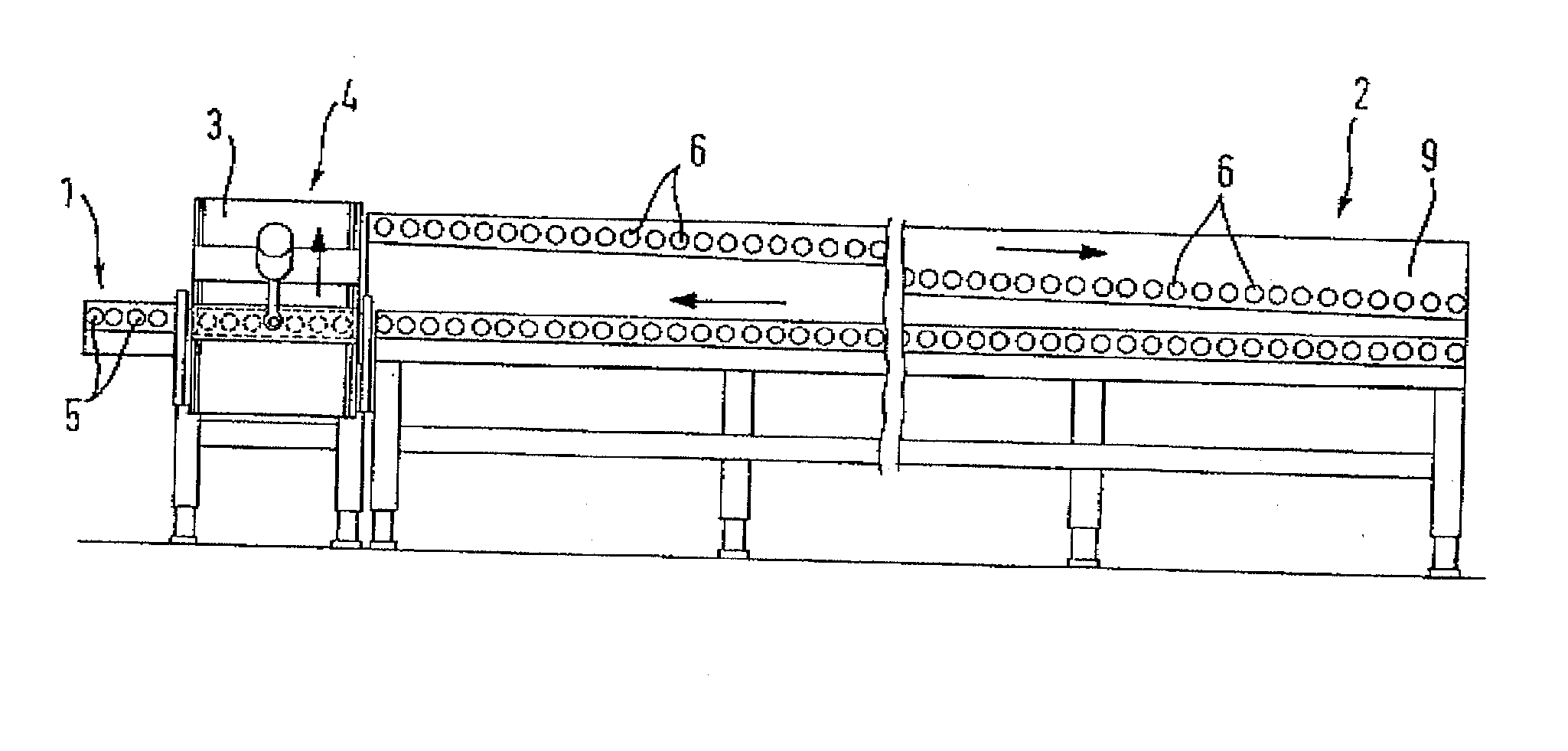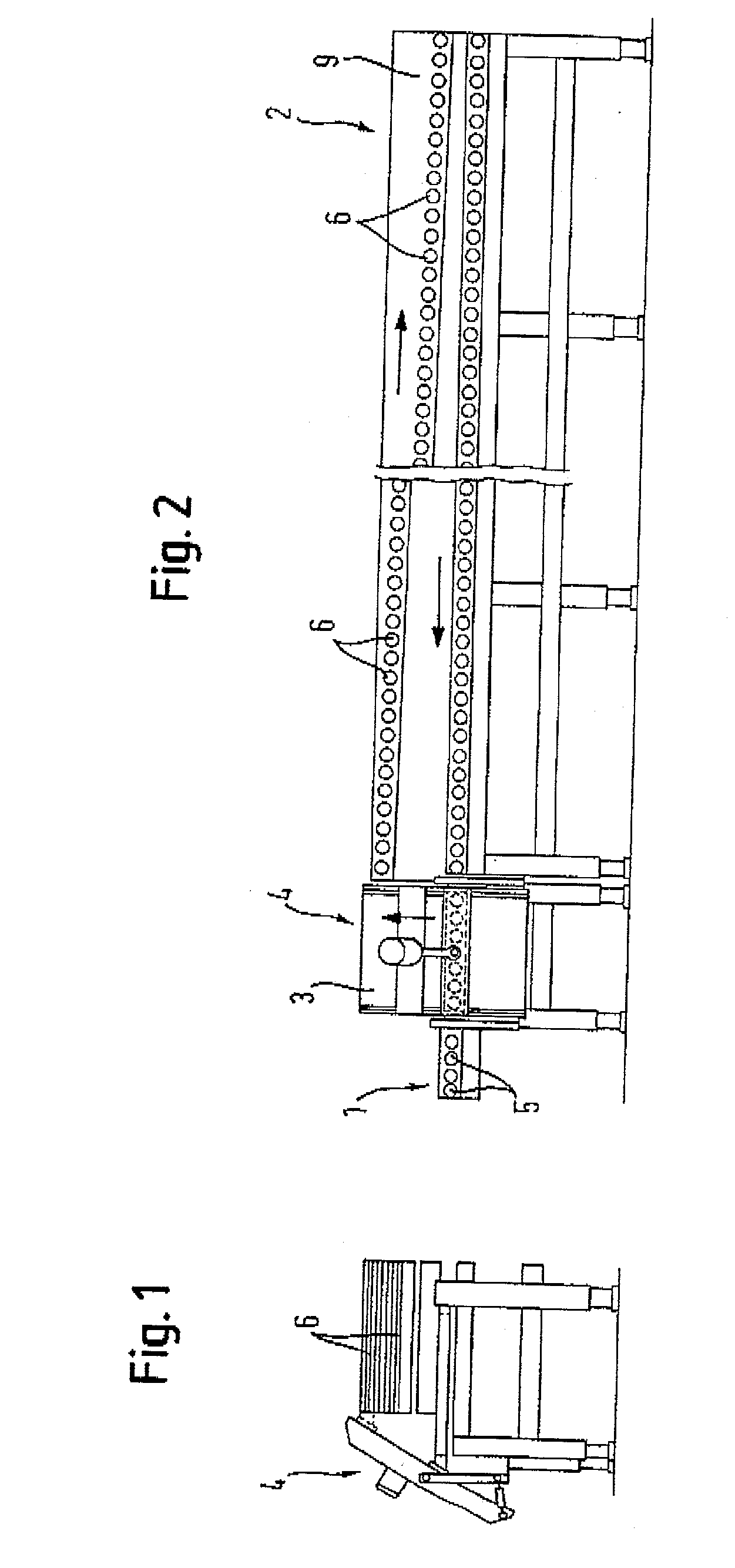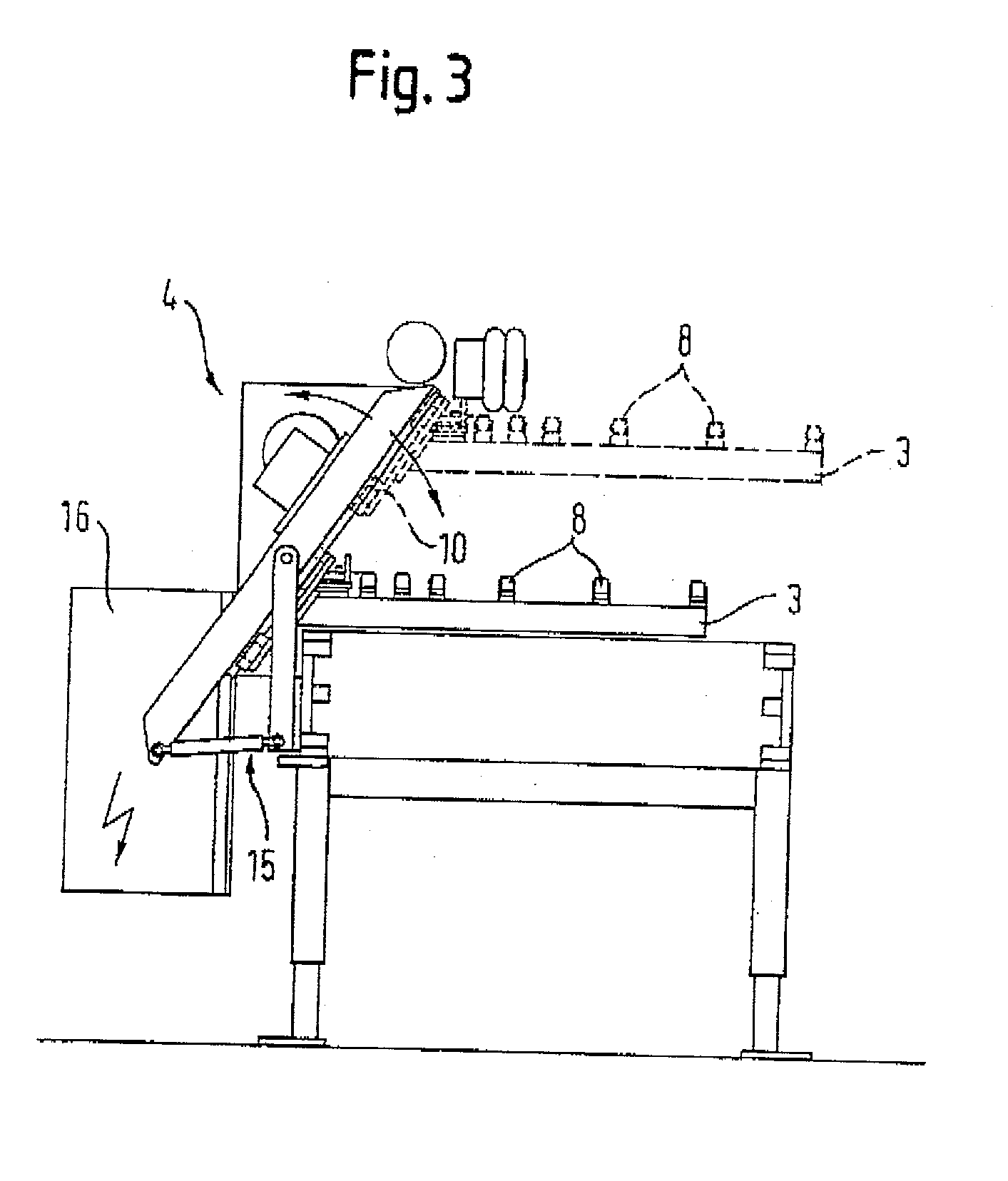Crank drive for returning work pieces
a crank drive and work piece technology, applied in the direction of furnaces, furnace components, lighting and heating apparatus, etc., can solve the problems of preventing an optimal utilization of the processing unit, occupying a large amount of space alongside the processing machine, and consuming a lot of time and cos
- Summary
- Abstract
- Description
- Claims
- Application Information
AI Technical Summary
Benefits of technology
Problems solved by technology
Method used
Image
Examples
Embodiment Construction
[0034] FIGS. 1 to 4 show a preferred embodiment of the mechanism of the invention for returning processed work pieces, with the mechanism being shown in FIGS. 1 and 3 as a side view and in FIGS. 2 and 4 as a rear view.
[0035] The mechanism according to the invention is attached to an already existing processing unit (not shown), for example, to an edge attachment device for pressing-in bridge edges into the edges of wooden work pieces having the form of plates. The work pieces 7 (FIG. 4) pass from the processing unit into a transfer mechanism 1 (in FIGS. 1 and 3: into the plane of the drawing, and in FIGS. 2 and 4: to the left) and are then lifted by means of a lifting mechanism with a lifting platform 3 to a return mechanism 2 which transports the work pieces 7 back to the loading side of the processing unit (in FIGS. 1 and 3: out of the plane of the drawing, and in FIGS. 2 and 4: to the right).
[0036] The lifting mechanism according to the invention has a crank drive 4 by means of w...
PUM
 Login to View More
Login to View More Abstract
Description
Claims
Application Information
 Login to View More
Login to View More - R&D
- Intellectual Property
- Life Sciences
- Materials
- Tech Scout
- Unparalleled Data Quality
- Higher Quality Content
- 60% Fewer Hallucinations
Browse by: Latest US Patents, China's latest patents, Technical Efficacy Thesaurus, Application Domain, Technology Topic, Popular Technical Reports.
© 2025 PatSnap. All rights reserved.Legal|Privacy policy|Modern Slavery Act Transparency Statement|Sitemap|About US| Contact US: help@patsnap.com



